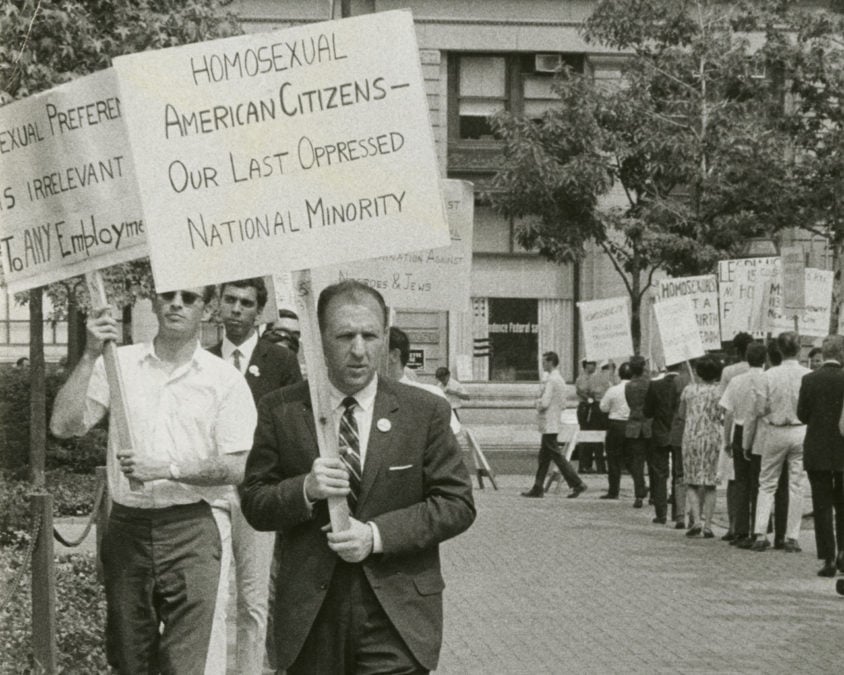
Frank Kameny leads a picket line in front of Independence Hall in Philadelphia on July 4, 1965, four years before the Stonewall uprising in New York City. Photo: New York Public Library.
Opinion
In 2019, California became the first state in the nation to implement LGBTQ history as part of the K-12 curricula, meaning LGBTQ representation finally would be visible in textbooks.
We would no longer be invisible; we would no longer be outcasts.
LGBTQ visibility
The educational benefits of LGBTQ representation are numerous. When students see themselves reflected in the curriculum, they are more engaged learners. Also, LGBTQ students are more engaged because most of them didn’t even know they had a history.
“A more comprehensive and deep understanding of American history is to understand how identity and within that, sexual and gender identity, has always been a space that has led to either the expansion or reduction of rights and responsibilities,” Mark Gomez, an education curriculum specialist told the Californian. “There’s a power structure and institutional … legacies that are tied up within that,” he said.
‘The Lavender Scare’ documentary shows gay witch hunt by US government
For example, students could learn about LGBTQ history in the context of the modern era. A lesson might draw parallels in the 1950s between the “Lavender Scare” and the “Red Scare.”
Another possibility for students could be a discussion about the legal significance of the U.S. Supreme Court’s historic 2015 ruling, finding that same-sex couples are entitled to the same marriage protections as heterosexual couples.
FAIR Education Act
This inclusion is the result of the FAIR Education Act, which was passed in 2011 and became law in 2012. It has been seven years in the making.
The process of what material to include in the textbooks and what textbooks to select took five years. New textbooks aren’t updated or purchased every year, and as a result, it takes time for schools to replace their old textbooks. Now when they do, the books will be inclusive.
In November 2017, the California State Board of Education approved textbooks with LGBT-inclusive history and social science. In 2018, a handful of school districts piloted these textbooks, in anticipation of adopting a new curriculum in 2019.
Following California’s example, several other states have implemented laws or intentions to include LGBTQ history in their K-12 curricula: New Jersey, Colorado, Illinois, and Maryland.
Before Stonewall, the Black Cat in Silver Lake had LGBTQ protest
Our Family Coalition
Our Family Coalition was hired by the California Department of Education to help create resources for the implementation of teaching LGBT history throughout the state. We’ve created a website that provides educational resources, evaluation materials, and lesson plans for educators who want to effectively apply an LGBTQ lens to their history and social science teaching.
We collaborated with Amy Sueyoshi of San Francisco State University to provide a K-12 educators’ track at the country’s first Queer History Conference. With our partners at ONE Archives in Los Angeles and the GLBT Historical Society in San Francisco, we continue to create additional resources for educators to use in their schools and classrooms. We also directly support schools by providing training and advice for those that want to implement with an integrative strategy.
We’re proud that the state’s Department of Education has taken a leadership position regarding LGBTQ visibility in K-12 schools. Wisely, the rest of the nation is following suit.
